At 9:30 a.m. on one fine day in October, cyclist after cyclist arrived at our meeting point at Nagano Station, and from each of their bike bags took out a Brompton in all colors and specs. The plan on this day for our group of a dozen was to travel by bike and train from Nagano Station via Chikuma City to Matsumoto City. The event was open to anyone with a bike of any make or model, but everyone showed up with—miraculously!—a Brompton. They unfolded their bikes and put on their helmets, and the Brompton owners were ready to go in a flash.
Via the temple town to our destination café for brunch
We were on the road, and our first destination was Zenkoji. We took a backstreet with little car traffic and pedaled past the Nishinomiya Shrine, aka the Ebisu of Nagano, to the front approach to the temple. That path is for pedestrians only, so we took one street to the east to the temple grounds. As early as 10:00 a.m., a long queue of visitors was already at the Sanmon Main Gate, designated an Important Cultural Property of Japan, waiting to enter the upper level open for public viewing.

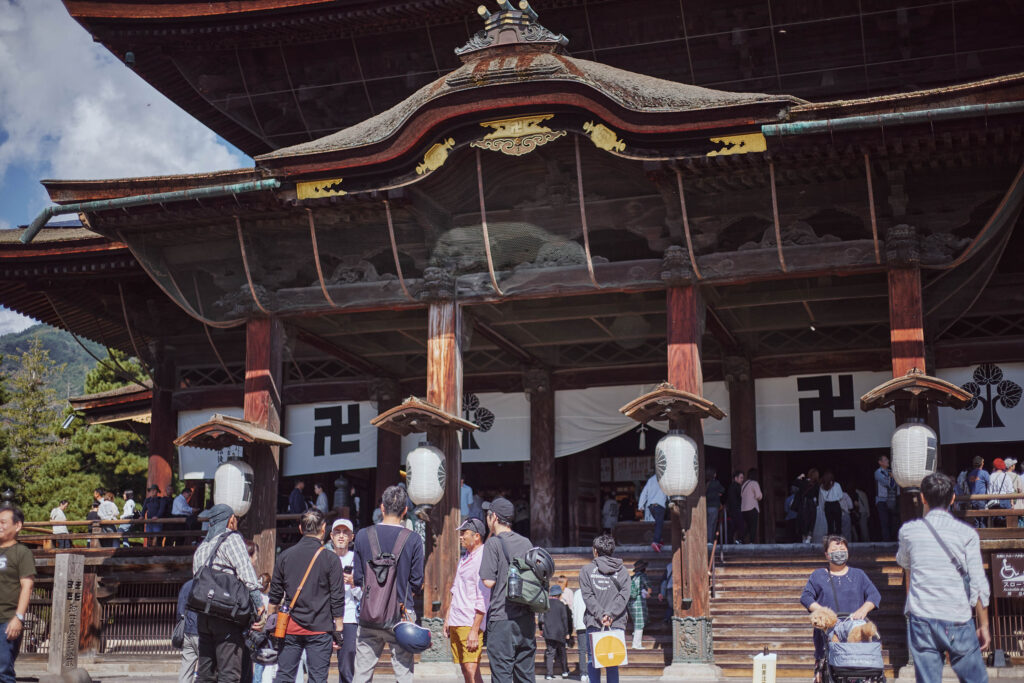
Zenkoji was founded in AD 644, during the Asuka period. The historic temple gained a wide following for nonsectarian teachings that vowed to save all people. The greatest highlight is the Hondo Mail Hall, built in 1707 and designated a National Treasure of Japan. At the far end is a passage where visitors can walk through complete darkness in search of the “key to paradise.” Touching the key is said to connect that visitor with the hidden statue of Buddha and bring good fortune. Since we were there for the ride, unfortunately we skipped that experience, and instead heard about the origins and history of Zenkoji from our event guide.

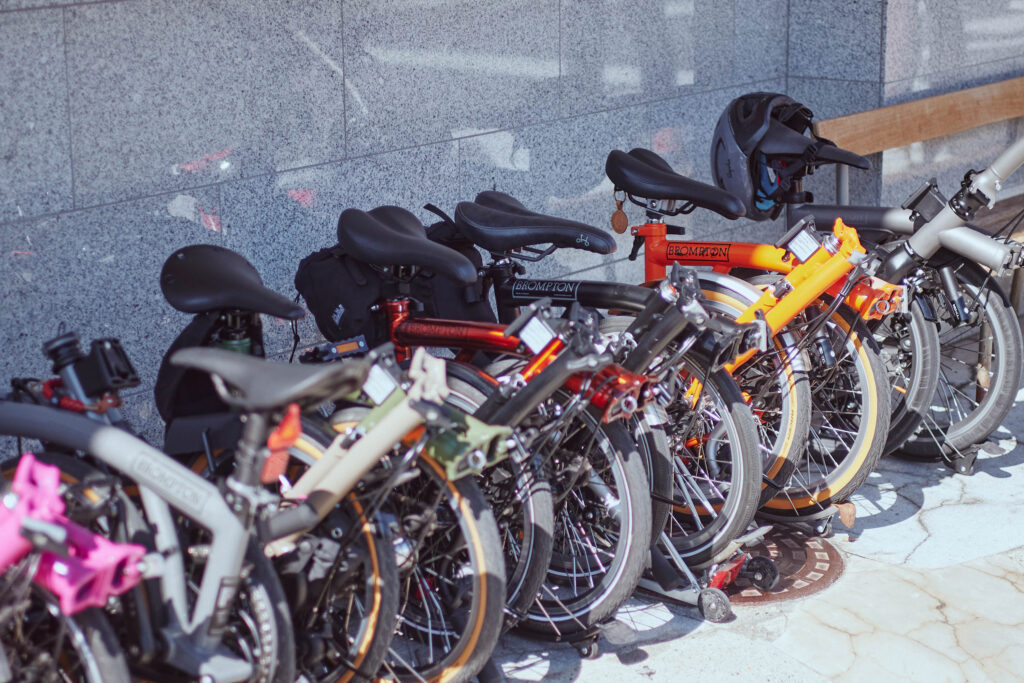
After Zenkoji, our next destination was NorthSouthEastWest, the café run by Kei and Tsuyoshi Kojima, the navigators of the Brompton×PAPERSKY Local & Café Ride in Nagano. From its perfect location next to the grassy square of the Nagano City Hall, the café serves as a hub for city walkers and connects the station area with Zenkoji, and farther outward, the city with the nature. We took less than an hour-long break there and enjoyed a leisurely brunch of freshly baked muffins and Tsuyoshi’s hand drip coffee. We left NorthSouthEastWest before noon and headed for the Chikuma River Cycling Road for an almost 20-kilometer ride to the Obasute area of Chikuma City.
The paradise of an eternally flat, paved cycling road
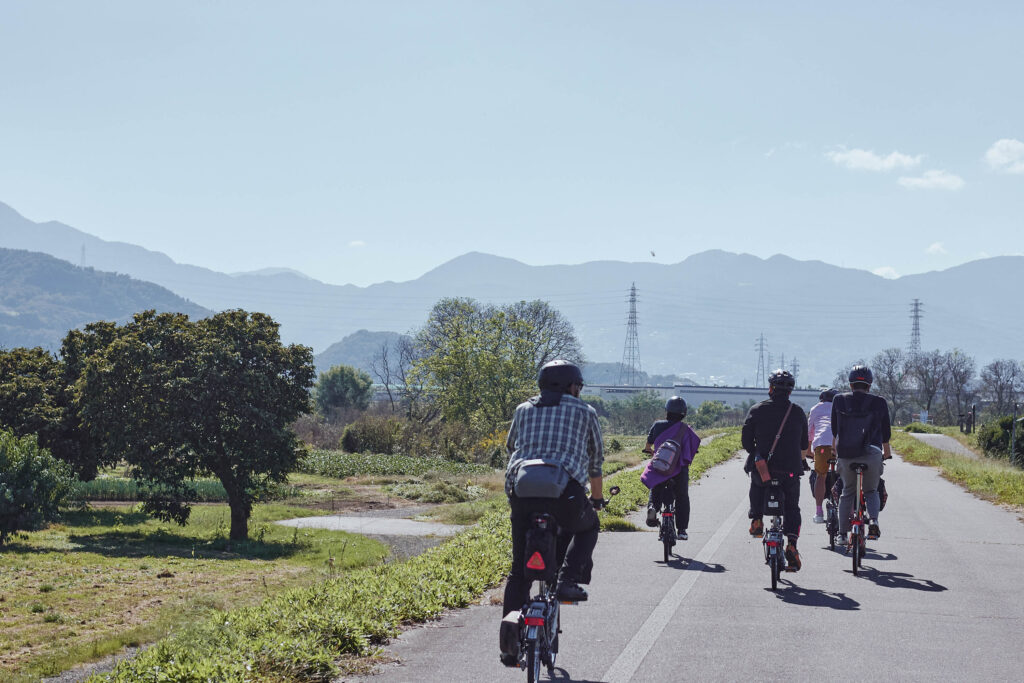
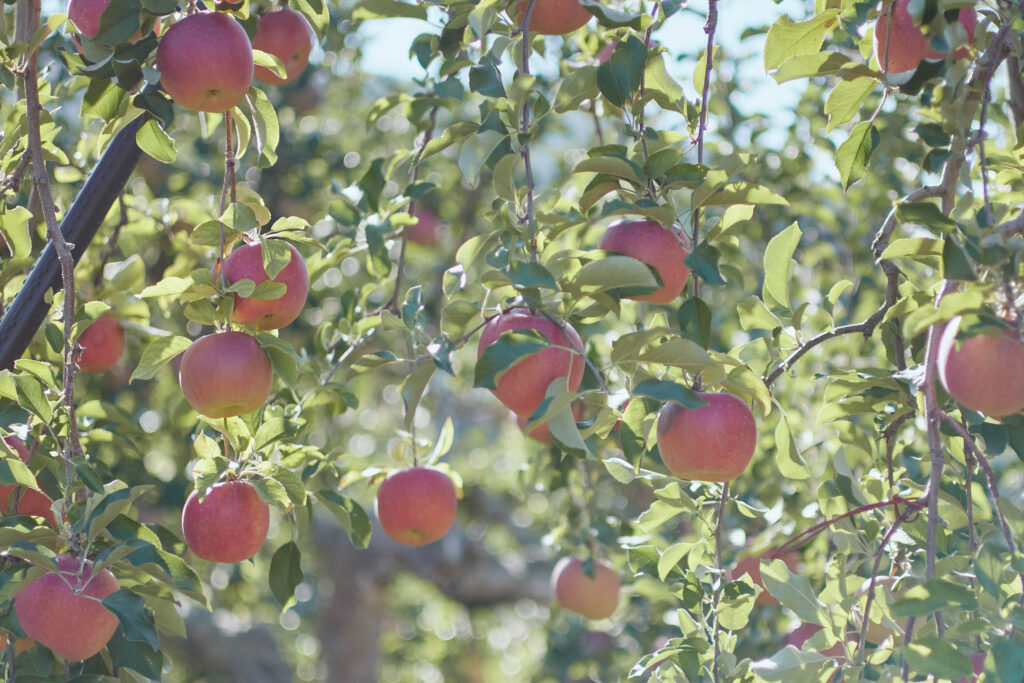
From NorthSouthEastWest, we pedaled through the residential area and by the old battlefield of Kawanakajima to the Chikuma River Cycling Road. The flat, paved road reserved for cyclists and walkers extends for an eternity along the bank of the Chikuma River, promising a nice smooth ride. The bank offered a sweeping view of the orchards and fields spreading out along the river, together with a wonderfully comfortable autumn breeze, drawing out loud sighs of wonder from the participants. After pedaling for quite a while, we spotted in the far distance ahead the Obasute Rice Terraces, celebrated for the view of the moon reflecting in every paddy.


Up the monster hill on our Brompton bikes
The Obasute Rice Terraces consist of some 2,000 stepped paddy fields cut into a slope between the elevations of 460 and 560 meters. It has been lauded as an excellent moon-viewing spot since the Heian period (794–1185). The paddies come in all shapes and sizes, and when they are filled with water, the moon reflects in each one, creating a magical sight to behold. Called Tagoto-no-tsuki, or moon in every field, the phenomenon was a subject of many a poem by the likes of Matsuo Basho and Kobayashi Issa. Today, tourists and photographers continue to visit the site during May and June, when the chances are good of seeing Tagoto-no-tsuki.

A popular spot for viewing the rice terraces is JR Shinonoi Line’s Obasute Station. That the platform benches face the paddies instead of the train tracks speaks of the fantastic view. For us, however, there was a catch. To get to the station, we needed to climb to the top of a pretty steep hill running through the fields. We did plan to take the Shinonoi Line to Matsumoto Station, but if we wanted to avoid the hill, we had the option of riding to the station before, Inariyama. We took a vote, and the (surprisingly) unanimous decision was to climb to Obasute Station. Some participants dashed up in one go, others took it slow and walked their bikes. Each at our own pace, we made our way up the elevation of 200 meters.


Café hopping in the castle town of Matsumoto
With our Bromptons in our bike bags, we enjoyed an hour-long ride on the Shinonoi Line to Matsumoto Station. We chose the less busy Alps Exit, and again took a backstreet with little car traffic and headed for the Matsumoto Castle. Admiring the ever photogenic castle, we explored the inner moat area. But with the Shinshu Matsumoto Soba Festival going on at the Matsumoto Castle Park, the castle grounds were swarming with tourists. We quickly left and headed for the Nakamachi street lined with traditional storehouses with black and white grid patterned namako walls. Destination: Amijok.
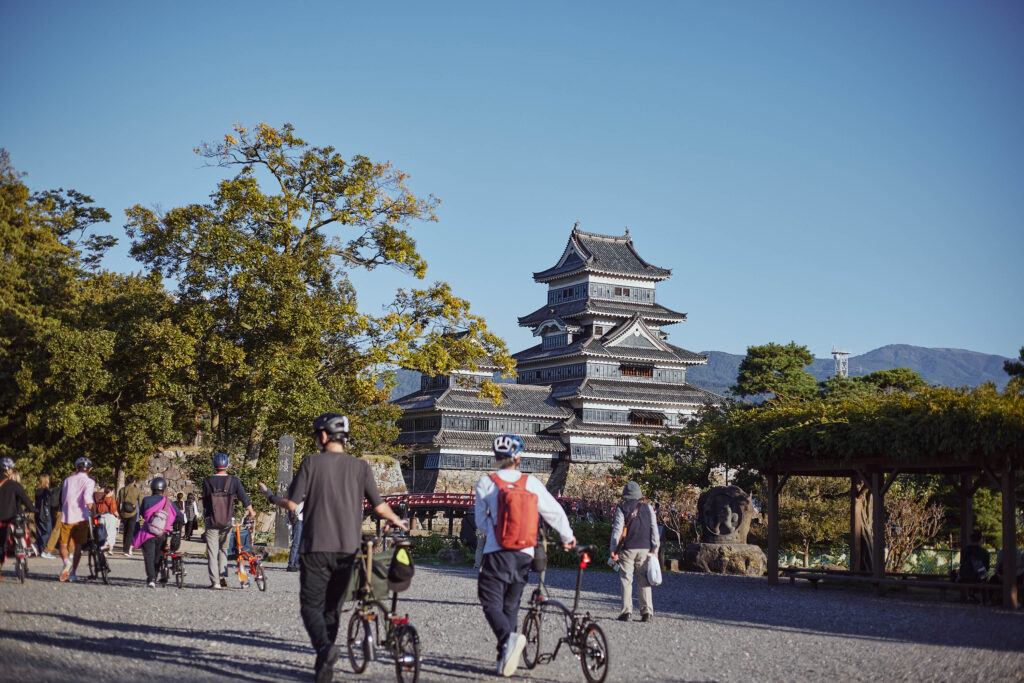


Like NorthSouthEastWest, Amijok is run by Kei and Tsuyoshi Kojima, the navigators of the Local & Café Ride in Nagano. Since it opened in 2011, Amijok has been a leader of the Matsumoto café scene, with its morning baked muffins attracting a constant stream of customers, from the locals to tourists. The ride participants had a good chat with Kei before heading to our final destination of the day, Sansan Shokudo. The small café–cafeteria with the ambience of a mountain hut is run by Hideki Takahashi, formerly the cook of a mountain hut in the Northern Japanese Alps. He waited for our group with a bento box meal of white rice cooked with spring water, handmade side dishes, and a main dish of melt-in-the-mouth braised cubed pork belly.
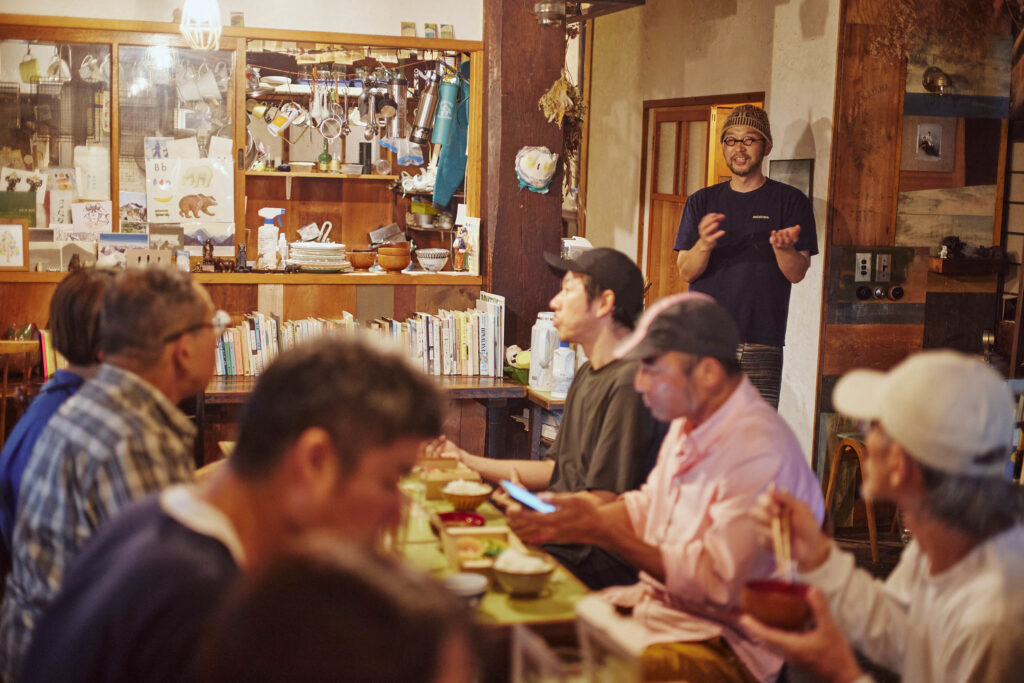
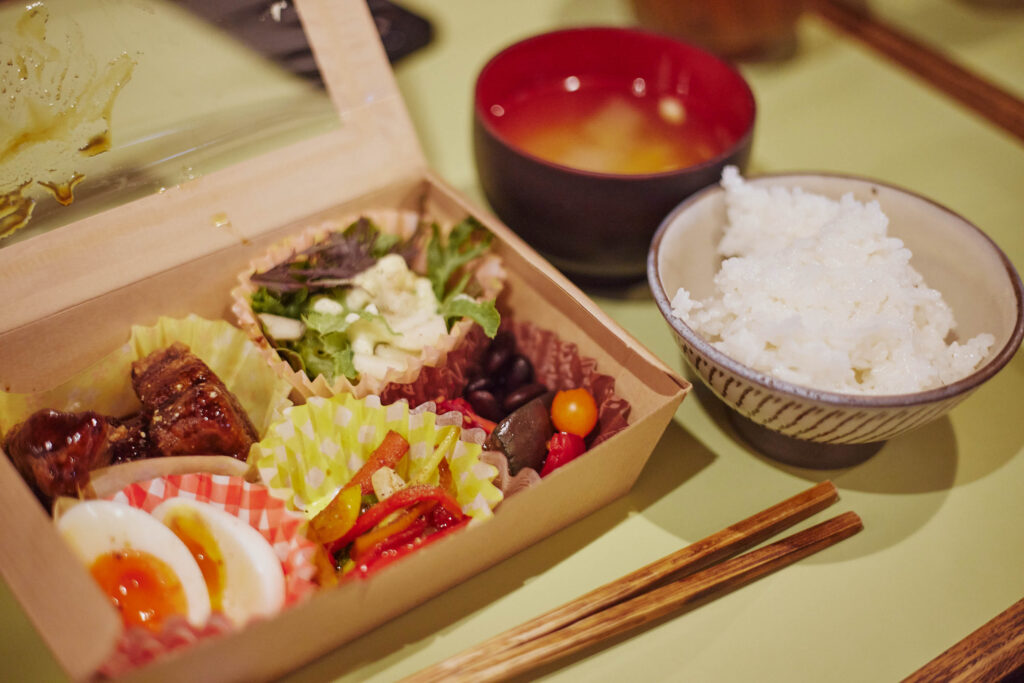
As we smacked our lips over the early supper, we looked back on the day’s ride. “My number one highlight was the monster hill of Obasute. The harder the challenge, the greater the reward of the rice terraces!” “I loved the flat cycling road.” “I can’t forget the hand drip coffee and freshly baked muffin.” With various scenes etched in the participants’ memory, the Brompton×PAPERSKY Local & Café Ride in Nagano ride event came to a close.
Which local wonders of Japan will we explore on the next ride. Stay tuned for more of PAPERSKY’s journeys with the folding bicycle Brompton.
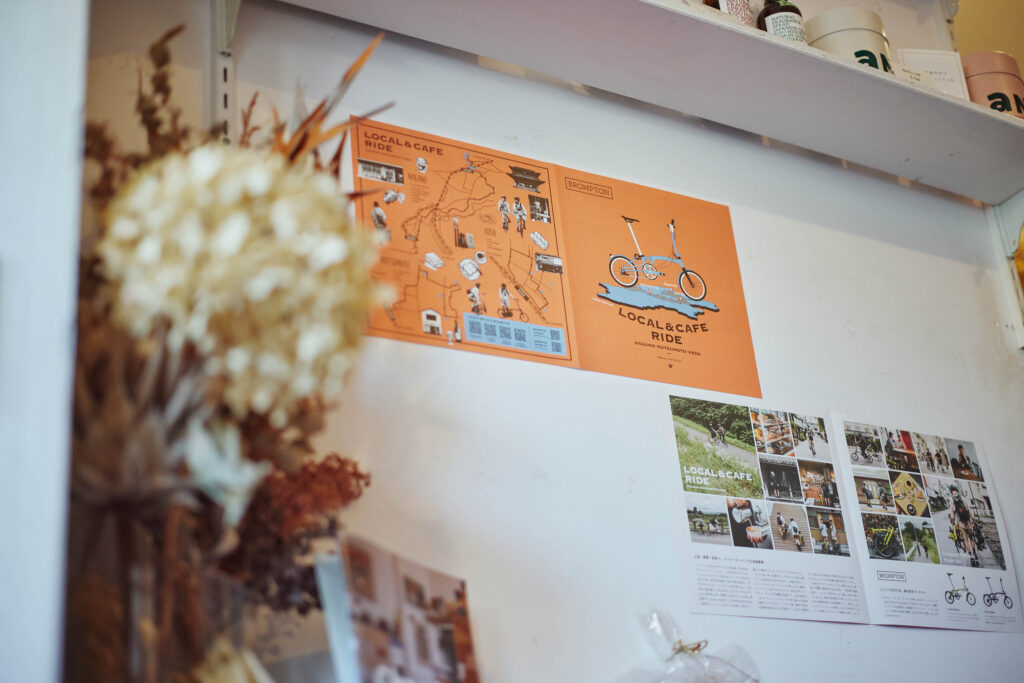
Cycling Route Map
Brompton
Brompton was invented in the British capital of London in 1975. Founder Andrew Ritchie decided there must be a better way of moving around London and engineered the bike in the bedroom of his flat. The vehicle folds into a light, compact package in under 20 seconds.https://jp.brompton.com











